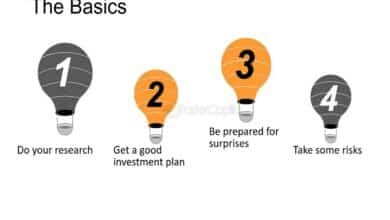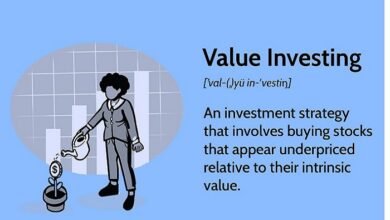How to Invest in Bonds: A Comprehensive Guide for Beginners

Investing in bonds is a strategic move for investors seeking stable returns and portfolio diversification. Bonds are debt securities issued by entities such as governments, municipalities, or corporations to raise capital. In this comprehensive guide, we’ll walk you through everything you need to know about how to invest in bonds, from understanding the basics to crafting an effective investment strategy.
Bonds
Before diving into how to invest in bonds, it’s essential to understand what bonds are. Bonds are fixed-income securities where an investor loans money to an issuer in exchange for periodic interest payments and the return of the bond’s face value at maturity. This makes bonds a safer investment compared to stocks, offering predictable income streams.
Types of Bonds
Knowing the different types of bonds is crucial when learning how to invest in bonds. Common types include:
- Government Bonds: Issued by national governments and considered low-risk.
- Municipal Bonds: Issued by states, cities, or other local entities, often tax-exempt.
- Corporate Bonds: Issued by companies to fund business activities, with varying risk levels.
- Zero-Coupon Bonds: Sold at a discount and pay no interest until maturity.
Benefits of Investing in Bonds
Investing in bonds offers several advantages. Firstly, bonds provide a steady income through interest payments, which is especially appealing for retirees. Secondly, they add diversification to an investment portfolio, reducing overall risk. Additionally, bonds are less volatile than stocks, making them a safer investment during economic downturns.
Risks Associated with Bonds
While learning how to invest in bonds, it’s vital to understand the risks involved. Interest rate risk, credit risk, and inflation risk are the primary concerns. Interest rate risk refers to the potential for bond prices to fall when interest rates rise. Credit risk is the possibility of the issuer defaulting on payments. Inflation risk means the purchasing power of the bond’s interest payments may decrease over time.
How to Buy Bonds
There are several ways to buy bonds. You can purchase them directly from the issuer or through a brokerage account. Additionally, bonds can be bought through bond funds or ETFs, which pool money from multiple investors to buy a diversified portfolio of bonds. Understanding how to invest in bonds includes knowing the best purchasing method for your financial goals.
Bond Ratings
When figuring out how to invest in bonds, bond ratings are an essential factor. Rating agencies like Moody’s, Standard & Poor’s, and Fitch rate bonds based on the issuer’s creditworthiness. Bonds with higher ratings are safer but offer lower yields, while lower-rated bonds (junk bonds) carry higher yields and higher risks.
Diversifying Your Bond Portfolio
Diversification is key to any investment strategy, including bonds. When learning how to invest in bonds, it’s important to spread your investments across different types, issuers, and maturities. This reduces the risk of significant losses and increases the chances of steady returns.
Tax Considerations
Tax implications are an important aspect of how to invest in bonds. Interest income from bonds is typically subject to federal and state taxes. However, municipal bonds are often exempt from federal taxes and sometimes state taxes if you live in the issuing state. Understanding the tax implications can help you choose the right bonds for your portfolio.
Strategies for Bond Investing
Effective strategies are crucial when figuring out how to invest in bonds. One popular strategy is laddering, where you buy bonds with different maturities. This ensures a steady stream of income and reduces interest rate risk. Another strategy is barbell investing, which involves holding short-term and long-term bonds but fewer intermediate-term bonds, balancing risk and return.
Monitoring Your Bond Investments
After you learn how to invest in bonds and build your portfolio, ongoing monitoring is essential. Keep an eye on interest rates, credit ratings, and economic conditions. Adjust your investments as needed to maintain your desired level of risk and return. Regularly reviewing your bond investments ensures they continue to meet your financial goals.
Conclusion
Understanding how to invest in bonds is a valuable skill for any investor. Bonds offer stability, diversification, and predictable income, making them a crucial component of a well-rounded investment portfolio. By learning the basics, understanding the risks, and implementing effective strategies, you can make informed decisions and achieve your financial objectives. Whether you are a beginner or an experienced investor, bonds can play a vital role in your investment strategy.
FAQs
- What are bonds? Bonds are debt securities issued by entities such as governments or corporations to raise capital, offering periodic interest payments and the return of the principal at maturity.
- Why should I invest in bonds? Investing in bonds provides a stable income, reduces portfolio risk through diversification, and is less volatile than stocks, making it a safer investment option.
- What types of bonds can I invest in? Common types include government bonds, municipal bonds, corporate bonds, and zero-coupon bonds, each with different risk and return profiles.
- How do I buy bonds? Bonds can be purchased directly from issuers, through brokerage accounts, or via bond funds and ETFs, depending on your investment goals and preferences.
- What are the risks of investing in bonds? The main risks include interest rate risk, credit risk, and inflation risk, each affecting the value and purchasing power of bond investments.





